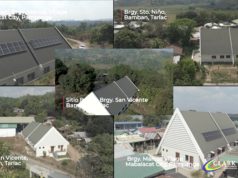CLARK FREEPORT – In an unpainted, unnamed tomb in a cemetery near the highway in Barangay Lingsat in San Fernando City, La Union lie the remains of an unknown hero – Sgt. Jose Nisperos.
Nisperos is the first Filipino to be awarded the US Congressional Medal of Honor, the highest military award from the American people, for his heroic fight against Muslim rebels in Basilan way back in 1911.
After the US congress singled him out for “the highest type of heroism at the risk of his life above and beyond the call of duty” two years later in 1913, Nisperos died in 1992 and was buried without military honors, apparently forgotten by the Americans.
His widow, Potenciana, and their three daughters are now already dead and buried in the same cemetery, amid their failure to get any pension from the US government.
But it is not yet too late, said Lt. Guy Hilbero of the Philippine Scouts Heritage Society based in this former US air force base.
Hilbero, backed by the US Veterans of Foreign Wars (VFW) Post 2485 in Angeles City, are arranging for the transfer of Nisperos’ remains to the Clark cemetery here and be given full military honors before reburial, in the presence of US civilian and military dignitaries.
The Clark cemetery was established here between 1947 and 1950 by moving the remains and headstones from at least four other US cemeteries in the Philippines. Covering 23.3 acres, the 12,000 plot cemetery also contains the remains of 800 members of the Philippine Scouts which used to be under the US Army.
The cemetery is the only area within this former US military base where the American flag still remains hung from a flagpole, alongside the Philippine flag. It is maintained by the VFW although there are proposals for it to be funded by the US federal government.
Hilbero noted that Nisperos was the first Filipino to be awarded the US Medal of Honor, also called the US Congressional Medal of Honor because it was established by an act of the US Congress in 1861.
He recalled that Nisperos was enlisted as a private with the 34th Company of the Philippine Scouts when he was told to join combined forces of the scouts and the US navy, led by Navy Ensign Charles Hovey, in pursuing Moro rebels in Basilan on Sept. 24, 1911.
Accounts of that day indicated that Hovey’s group was overwhelmed the rebels who were armed with guns, bolos and spears. Nisperos’ left arm was hacked and hit by a bullet, while his body sustained spear wounds.
“Leaning on his wounded left arm, he used his right arm to fire and hold at bay the rebels until reinforcements arrived,” Hilbero noted. Only Hovey turned out to be the only fatality in the incident.
Nisperos’ left arm was later amputated, and after being released from the hospital, he was appointed deputy sheriff of the district of Zamboanga on March 16, 1912. Two months later, he was honorable discharged from military service amid deteriorating health and was entitled to a monthly pension of $55.
On Feb. 5, 1913, a parade was held in his honor at Luneta Park in Manila and Maj. Gen. Franklin Bell, then chief of the Army in the Philippines, pinned on him the Medal of Honor which had his name engraved at the back.
There were at least nine military men who testified to his heroism, including Brig. Gen. John Pershing.
When he died in 1922, there was no military honors during his burial. The first Filipino Medal of Honor awardee was apparently already forgotten and efforts of his widow and three daughters to get pension from the US government even failed.
“It was a situation that was aggravated by the loss of the Medal of Valor. Somebody who was well meaning borrowed it from the family so that it could be used as evidence that Nisperos’ family should be entitled to benefits,” Hilbero said.
Records showed that in 1922, one Dr. Jose Bantug of the Philippine Museum borrowed the medal from a granddaughter of Nisperos to help them negotiate for US pension.
The medal was never returned. Hilbero cited reports that the medal was recently auctioned off at the cost of some $1,100 dollars. He said his group and the VFW are working out ways to retrieve the medal.
Nicolas’ remains will likely still be tended to by relatives at the cemetery in San Fernando, La Union this All Saints’ Day on Nov. 1, but Hilbero is hopeful that by next year, the remains would already be at the Clark cemetery.
While Nisperos’ relatives have never failed to light candles for him every Nov. 1, his tomb in San Fernando, La Union has remained unpainted and even without any identifying mark.
Hilbero said, however, that Nisperos would be finally be given his rightful graveyard and epitaph once his remains are moved to Clark during the Philippine Scouts Heritage Society 28th review day slated on April 8 next year.
A gun salute is even expected for the hero, 90 years after his death.




